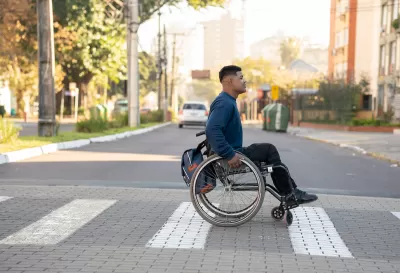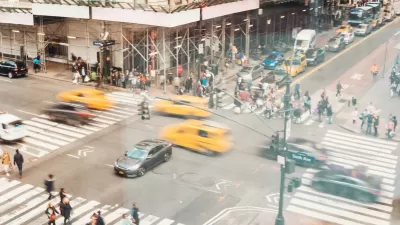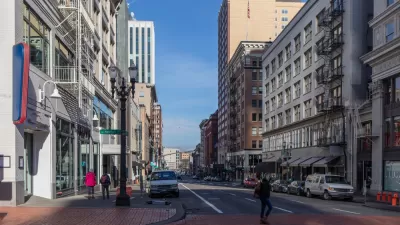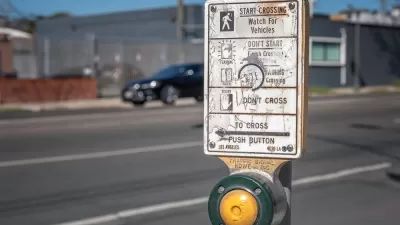Public agencies don’t track traffic deaths and injuries involving disabled people, leaving a gap in data to guide safety interventions.

In an opinion piece in Governing, Claudia Folska calls on transportation officials and planners to bring people with disabilities — one in four American adults — into the conversation about road safety. According to Folska, “No public agency at any level of government specifically tracks traffic fatalities and injuries involving disabled pedestrians. Police aren’t even required to note a disability on the accident report.” Yet wheelchair users are at a roughly 36 percent higher risk of dying than pedestrians on foot.
Folska argues that people with disabilities must be at the planning table, otherwise “roadway engineers and urban planners are basically taking educated guesses about where to spend money on safety improvements and which ones to employ.”
Folska suggests interventions like curb cuts, traffic calming, safe crosswalks, and accessible sidewalks, adding that “It would help to have an accurate count of accidents, injuries and fatalities involving anyone who meets the definition of disabled.”
“The U.S. Department of Transportation’s Fatality Analysis Reporting System, which provides the National Highway Traffic Safety Administration and other agencies with information on traffic fatalities, could and should create a category for disabled pedestrians, and then break it down by specific disabilities.” This data can then be used to make informed decisions about safety interventions.
FULL STORY: Disabled People Are Dying in America’s Crosswalks. We Need to Protect Them.

Alabama: Trump Terminates Settlements for Black Communities Harmed By Raw Sewage
Trump deemed the landmark civil rights agreement “illegal DEI and environmental justice policy.”

Planetizen Federal Action Tracker
A weekly monitor of how Trump’s orders and actions are impacting planners and planning in America.

The 120 Year Old Tiny Home Villages That Sheltered San Francisco’s Earthquake Refugees
More than a century ago, San Francisco mobilized to house thousands of residents displaced by the 1906 earthquake. Could their strategy offer a model for the present?

In Both Crashes and Crime, Public Transportation is Far Safer than Driving
Contrary to popular assumptions, public transportation has far lower crash and crime rates than automobile travel. For safer communities, improve and encourage transit travel.

Report: Zoning Reforms Should Complement Nashville’s Ambitious Transit Plan
Without reform, restrictive zoning codes will limit the impact of the city’s planned transit expansion and could exclude some of the residents who depend on transit the most.

Judge Orders Release of Frozen IRA, IIJA Funding
The decision is a victory for environmental groups who charged that freezing funds for critical infrastructure and disaster response programs caused “real and irreparable harm” to communities.
Urban Design for Planners 1: Software Tools
This six-course series explores essential urban design concepts using open source software and equips planners with the tools they need to participate fully in the urban design process.
Planning for Universal Design
Learn the tools for implementing Universal Design in planning regulations.
Clanton & Associates, Inc.
Jessamine County Fiscal Court
Institute for Housing and Urban Development Studies (IHS)
City of Grandview
Harvard GSD Executive Education
Toledo-Lucas County Plan Commissions
Salt Lake City
NYU Wagner Graduate School of Public Service





























